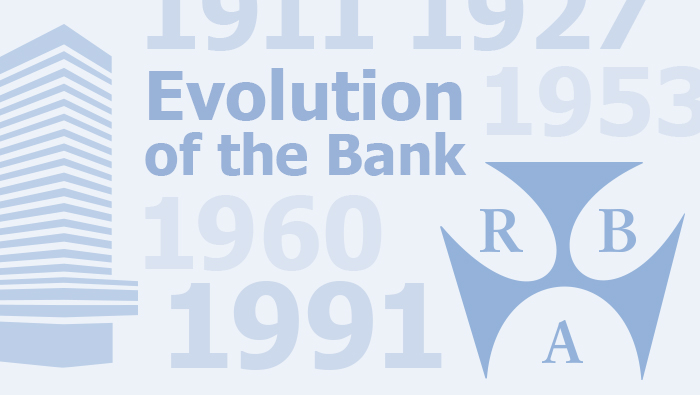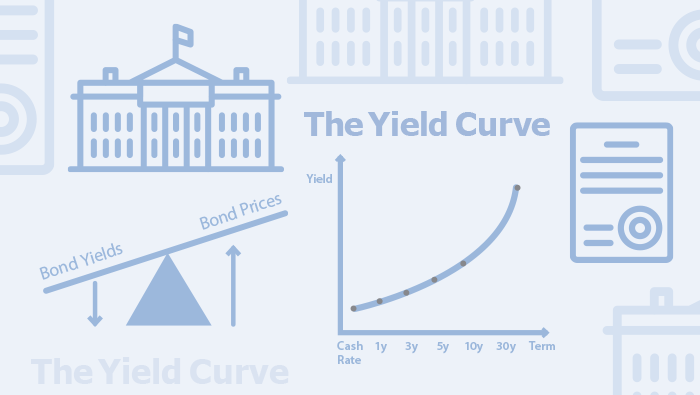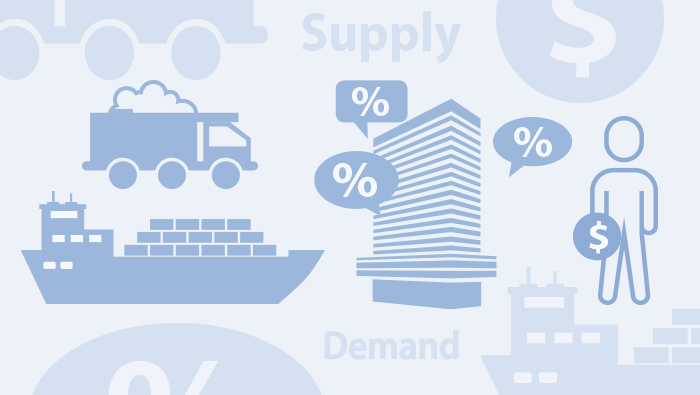December 2021
- Download the complete Bulletin December 2021 3.5MB

Which Firms Drive Business Investment? New Evidence on the Firm-size Distribution
Business investment plays a key role in our current and future economic prosperity. Aggregate investment can be difficult to predict, however. This may be because different firms face different investment environments, and the factors behind their decisions can vary. This gives rise to the question: which types of firms are most important for driving aggregate outcomes? Detailed, firm-level data shows that large firms account for a significant share of investment in Australia, and are the major drivers of the patterns in aggregate non-mining investment. Understanding how firms of various sizes contribute to overall outcomes will help us to gauge the potential impact of any differences they might face, including via policies, on investment outcomes and the economy.

Why Are Investment Hurdle Rates So Sticky?
Firms commonly evaluate potential investment projects by comparing expected returns to a hurdle rate. Survey evidence suggests that hurdle rates have remained high and well above the weighted average cost of capital (WACC) in recent years, as has the ex post return on invested capital for Australian-listed companies. This stickiness is a marked contrast to the decline in interest rates. This article reviews the evidence for why hurdle rates are so far above the WACC, and why they have remained so sticky over time. Proposed reasons include the perception that returns available on potential projects are unrelated to the level of interest rates. In addition, firms may avoid reducing hurdle rates to minimise the risk of regret, and some business managers could view long-term declines in interest rates as temporary.

Do RBA School Talks Improve Student Outcomes?
As part of our education program, the Reserve Bank of Australia (RBA) conducts school talks to promote economic literacy and encourage a larger and more diverse group of students to study economics. To formally evaluate this aspect of our education program, we surveyed students before and after school talks in a randomised control trial and the results were assessed relative to a control group. We found that RBA school talks improve both perceived and actual understanding of key economic concepts and increase the confidence of students, including those who are less socially advantaged. Importantly, smaller talks conducted online were perceived to be just as useful as those conducted in person, which suggests that the geographic reach of the school talks program could potentially be expanded considerably without sacrificing quality or student outcomes.

The Central Bank's First Economist
In 1930, when officials from the Bank of England came to Australia to assist Australian governments with their budgetary problems, they found that the original Commonwealth Bank, then Australia's central bank, did not have an economist on its staff. They urged the Bank's Governor to appoint a qualified economist and recommended Leslie Melville, Professor of Economics at the University of Adelaide. Melville joined the Bank in March 1931. Some two decades later, when he left to become Vice-Chancellor at the Australian National University, Dr HC Coombs wrote to him saying that he had ‘made a contribution to the theory and practice of central banking which is without equal in the world’. As Melville's 100th birthday approached in 2002, the Australian National University decided to hold a public lecture in his honour. Governor Ian Macfarlane was invited to give the inaugural lecture. He concluded that Melville was ‘one of the most distinguished Australians of the past century’. The 20th Melville Lecture will be given in early 2022 by the Treasury Secretary, Dr Steven Kennedy. Ahead of this event, the latest records to be released in the Bank's new digital archive, Unreserved, include Melville's papers in digitised form. This article traces Melville's life and career, and his significance as the Bank's first economist.

Recent Changes to the Reserve Bank's Liquidity Operations
The Reserve Bank's policy measures to support the economy in the wake of the COVID-19 pandemic have significantly increased liquidity in the banking system. Consequently, market participants have had less need to use some of the Reserve Bank's liquidity operations and facilities. In response, the Bank reduced the frequency of its regular open market liquidity operations from daily to weekly. It also removed the requirement for financial institutions that make payments outside of business hours to source additional liquidity from the Bank via open standing facility repos so long as they are holding sufficient Exchange Settlement balances. This article outlines these recent operational changes.

Implications of the IMF's SDR Allocation for Australia and the Global Economy
As part of the global policy response to address the economic challenges associated with the COVID-19 pandemic, in August 2021 the International Monetary Fund (IMF) allocated US$650 billion worth of Special Drawing Rights (SDRs) to its members, providing a significant boost to global liquidity. This article details the workings of SDRs and describes how vulnerable countries can use this additional liquidity in a range of ways, including to support spending on their country's crisis response. It also considers how countries that do not have a need for this liquidity, like Australia, may use a share of their SDR allocation to assist more vulnerable countries.

Corporate Debt Covenants in Australia
The economic downturn associated with the COVID-19 pandemic has raised questions about the extent to which a deterioration in the financial health of some businesses could lead to breaches of debt covenants – with potential knock-on effects on firm behaviour and loan quality. This article includes a new data set on corporate debt covenants in Australia, developed by applying text analytic techniques on the annual reports of non-financial listed companies. It reveals that the share of companies reporting debt covenants has steadily increased over time from around 10 per cent in 2002 to almost 40 per cent in 2020, although the proportion of firms with covenants that reported a breach has remained stable at roughly 13 per cent. Also, following a breach, firms try to get their financial indicators back on track quickly. This study is a first step in understanding the role of debt covenants as a point of financial friction in the economy.

The Indian Banking System
Banks play a key role in India's financial system and underpin economic growth. However, during the 2010s, the health of Indian banks deteriorated significantly and a subsequent decline in credit growth contributed to a slowdown in economic activity. Although Indian authorities have taken a number of steps to strengthen the banking system, progress has been difficult and has been further curtailed by the COVID-19 pandemic. While financial linkages between Australia and India remain limited, India is an increasingly important trading partner for Australia, and continued weakness in its banking system is likely to weigh on India's demand for Australia's exports.
September 2021
- Download the complete Bulletin September 2021 7.8MB

An Assessment of the Term Funding Facility
The Term Funding Facility (TFF) was announced by the Reserve Bank Board in March 2020 as part of a comprehensive policy package to support the Australian economy in response to the COVID-19 pandemic. The facility has provided low cost three-year funding to banks operating in Australia against high quality collateral. The TFF closed to new drawdowns at the end of June 2021, so the last of this funding will not mature until mid 2024. This article provides an overview of TFF usage by banks, considers the future refinancing task for the banking sector, and provides an assessment of the TFF with respect to its primary policy goals.

Small Business Finance and COVID-19 Outbreaks
Economic conditions for small and medium-sized enterprises (SMEs) improved in the second half of 2020 and early 2021, although measures to contain the recent outbreaks of COVID-19 have affected firms in much of Australia. SMEs are being supported by policy measures, including a number of initiatives that continue to encourage lending to smaller firms. Nonetheless, the volume of SME lending has been little changed for some time, and access to finance continues to be a challenge for small businesses.

Climate Change Risks to Australian Banks
Climate change affects banks because of the impact it has on the value of assets used as collateral for loans and the incomes borrowers use to repay their loans. There is significant uncertainty about the magnitude of risks to banks from climate change. This is because of the uncertainty about how climate change will alter future weather patterns, how policies will change globally and how economies adapt. This article uses one approach to provide preliminary estimates of the possible scale of risks climate change poses to banks' housing and business exposures. This approach suggests that a small share of housing in regions most exposed to extreme weather could experience price falls that might subsequently result in credit losses, but the overall losses for the financial system are likely manageable. Banks are also exposed to transition risks from their lending to emissions-intensive industries, but their portfolios appear to be less emissions-intensive than the economy as a whole. Further estimates of the impact of climate change on banks will be provided by the Climate Vulnerability Assessment currently being undertaken by the Australian Prudential Regulation Authority and the five largest banks.

Towards Net Zero: Implications for Australia of Energy Policies in East Asia
China, Japan and South Korea have all set targets to achieve net-zero carbon emissions by around the middle of this century. These three countries account for around two-thirds of Australia's fossil fuel exports. Based on emission scenarios consistent with these commitments, we find that Australia's coal exports could decline significantly by 2050, with a more modest effect likely for liquefied natural gas exports; both may be offset to some degree by increases in green energy exports. The effect on overall Australian GDP is expected to be relatively small and gradual. Significant uncertainty surrounds the speed and manner in which countries will work to achieve net-zero emissions, as well as the technological developments that could change the efficiency and carbon intensity of fossil fuels.

The Financial Cost of Job Loss in Australia
Workers who lose a job tend to experience large and persistent earnings losses. On average, real earnings are around one-third lower in the year of job loss, and it takes at least four years for an individual's annual earnings to recover. Earnings losses are particularly persistent following the loss of a long-term job. Workers who find new employment tend to work fewer hours at lower hourly rates of pay.

Government Bond Markets in Advanced Economies During the Pandemic
Governments in advanced economies have funded their large fiscal policy responses to the COVID-19 crisis by issuing government debt securities. Except for a period of dysfunction in the early months of the pandemic, government bond markets have functioned well. Despite the substantial increase in debt issuance, the interest rate paid on new government debt has declined to historically low levels. A rise in private sector saving relative to investment has contributed to demand for low-risk assets like government bonds. At the same time, advanced economy central banks have lowered their policy rates and made large-scale purchases of government bonds in secondary markets in pursuit of their inflation and employment goals.

China's Labour Market: COVID-19 and Beyond
The Chinese labour market has recovered quickly following the sharp economic downturn caused by the COVID-19 pandemic. While widespread lockdown measures in early 2020 pushed large numbers of Chinese workers out of the labour market, successful containment of the virus allowed most of these workers to return relatively quickly. Structural factors – notably a shrinking labour force – are now likely to be the dominant drivers of developments in the Chinese labour market. In the short term, policymakers are considering changes to the retirement age to boost labour supply. In the longer term, the focus of reforms is increasing labour productivity and reducing labour market frictions.

China's Evolving Financial System and Its Global Importance
China's economic policy response to the COVID-19 pandemic has been less stimulatory than the response after the global financial crisis because Chinese authorities have sought to avoid fuelling risks in the financial system. Indeed, the authorities have continued with reforms to make the financial system more market-based so that it can better support China's economy, although the state continues to play a central role in the financial system. At the same time, China has become increasingly important for international financial markets, mainly due to its weight in international trade but also because certain cross-border capital flows are rising.
June 2021
- Download the complete Bulletin June 2021 9.90MB

COVID-19 Stimulus Payments and the Reserve Bank’s Transactional Banking Services
The Australian Government introduced significant fiscal support measures to limit the negative economic effects of the COVID-19 pandemic and support economic recovery. In its capacity as the banker to the Commonwealth of Australia, and importantly as transactional banker to the large agencies charged with delivering a number of these measures, the Reserve Bank facilitated the distribution of fiscal stimulus payments to households and businesses. Improvements in government processes to ensure bank account details are available when delivering large-scale economic stimulus programs ensured that the COVID-19 stimulus payments were delivered more quickly and efficiently when compared to the stimulus payments made during the Global Financial Crisis (GFC) in 2008 and 2009. This meant that there was little delay for the economic stimulus to be available to the recipients and the economic support to take effect.

How Far Do Australians Need to Travel to Access Cash?
Our analysis finds that Australians generally do not have to travel far to reach their nearest cash access point – a location where they may make cash withdrawals and/or deposits. Around 95 per cent of people live within about 5 kilometres of a cash access point, broadly unchanged since 2017. However, there are parts of regional and remote Australia with limited access to cash. People in these areas must travel longer distances to access cash, and the available access points do not always have nearby alternatives. This means that access to cash in these areas is more vulnerable to any future removal of cash services.

An Initial Assessment of the Reserve Bank's Bond Purchase Program
This article provides an initial assessment of the effect of the Reserve Bank's bond purchase program on government bond yields. Overall, we estimate that the program has reduced longer-term Australian Government Security (AGS) yields by around 30 basis points and lowered the spread of state and territory bond yields to AGS yields by 5 to 10 basis points, relative to where they would otherwise have been. This reduction in yields occurred partly in anticipation of the program and partly at its announcement. Bond yields have risen noticeably since the program was announced, but this does not imply that the impact of the program was transitory: many factors contribute to changes in bond yields, and our assessment is that bond purchases serve to hold yields lower than they would otherwise have been over an extended period. The bond purchase program has not had any substantial negative impact on the functioning of government bond markets.

Monetary Policy, Liquidity, and the Central Bank Balance Sheet
In response to the COVID-19 pandemic, the Reserve Bank deployed a number of monetary policy tools, including some new measures, to support the economy and address disruptions to the smooth functioning of financial markets. This new mix of policy tools has changed how the Reserve Bank implements monetary policy, and has significantly increased the size of the Bank's balance sheet and the amount of liquidity in the banking system.

The Committed Liquidity Facility
The Reserve Bank provides the Committed Liquidity Facility (CLF) to enhance the resilience of the banking system in times of liquidity stress. Banks need to hold high-quality liquid assets (HQLA), including government securities, as a buffer against liquidity stress. However the low level of government debt in Australia limited the amount they could reasonably hold. The CLF was introduced in 2015 as an alternative. Since 2019, the size of the CLF has been reduced because the amount of government debt on issue has increased significantly. The fee charged for access to the CLF has also been increased to ensure that banks have an incentive to manage their liquidity risk appropriately. The size of the CLF and the associated fee have been adjusted in a measured way to ensure a smooth transition.

Corporate Bonds in the Reserve Bank's Collateral Framework
In May 2020, the Reserve Bank broadened the range of corporate bonds accepted as collateral under repurchase agreements (repo) from AAA-rated to investment grade (BBB- or above). This change in policy increased the universe of potentially eligible securities for domestic market operations by around $150 billion, of which the Reserve Bank has received applications for and granted eligibility to around $50 billion. In assessing applications for repo eligibility, a number of features – including subordination, embedded options and legal risks – required further investigation to ensure the securities remained within the Bank's risk appetite. Corporate securities remain a small share of total eligible collateral. While usage of corporate bonds in repos with the Bank has been relatively modest to date, the policy change to broaden may have provided some support to the Australian corporate bond market.

Review of the NGB Upgrade Program
A key responsibility of the Reserve Bank is to maintain public confidence in Australia's banknotes as a secure method of payment and store of wealth. To help achieve this objective the Bank initiated the Next Generation Banknote (NGB) program, which involved the design and development of a new banknote series to make Australia's banknotes more secure from counterfeiting. The decade-long program concluded in late 2020, with the release of the final upgraded banknote into general circulation. The program delivered a suite of new Australian banknotes with a range of new innovative security features. Overall the banknotes have been well received by the general public and counterfeiting rates have remained low.

The Transition from High School to University Economics
To promote economic literacy and ensure the long-term health of the economics discipline, it is important to address the sharp decline in the size and diversity of the economics student population. Administrative data from the University Admissions Centre (UAC) provides information about how students transition from high school to university economics. These pathways suggest that interventions to increase the number and diversity of students studying economics in Year 12 can strengthen the pipeline of students into university economics. Interventions to improve the economic literacy of Year 12 economics students who are less socially advantaged are important to encourage more diversity in university economics; in contrast, female students appear to need less academic support and may instead benefit more from tailored interventions that pique their interest in and confidence with economics. More advocacy of economics should also increase its uptake at university, particularly among students already studying economics and/or a STEM subject in Year 12 and higher performers.

Bank Fees in Australia During the COVID-19 Pandemic
The Reserve Bank's annual survey of bank fees shows that their fee income from both households and businesses in Australia declined notably over 2020 due to the disruption to economic activity caused by the COVID-19 pandemic.

Low Interest Rates and Bank Profitability – The International Experience So Far
This article discusses the effect that low interest rates may have on bank profits, and reviews the experience of banks in economies that have had very low interest rates for an extended period. In the short to medium run, low or negative interest rates appear to reduce bank profits only a little, after accounting for the positive effects of lower interest rates on loan losses and demand for credit. However, the negative effects on bank profits increase when interest rates remain very low for a prolonged period. The profits of smaller banks – which have more household deposits, limited pricing power or less capacity to adjust their activities – are more sensitive to a prolonged period of low interest rates.

Underemployment in the Australian Labour Market
Underemployment in Australia has been moving higher for several decades. This article reviews the trends that have been driving this, including the long-run increase in part-time employment and changes in how the labour market adjusts to fluctuations in labour demand. The article also discusses the implications of the upwards trend in the underemployment rate for assessing spare capacity in the labour market. One implication is that the unemployment rate may need to decline by more than has previously been the case before wage pressures start building strongly.

The Global Fiscal Response to COVID-19
Globally, the fiscal policy response to the COVID-19 crisis has been the largest and fastest in peacetime. Governments have prioritised direct fiscal support for private incomes and employment, which has limited economic scarring and established a solid foundation for the recovery. The size and composition of the fiscal response has varied across countries, reflecting differences in automatic stabilisers, pre-pandemic fiscal space, the severity of infections and policy preferences. Fiscal policy is likely to remain supportive for some time after the pandemic subsides, and in many countries is expected to focus increasingly on boosting investment. For as long as governments anchor spending decisions in a sound medium-term fiscal framework and interest rates remain lower than the rate of economic growth, ongoing fiscal support need not pose problems for government debt sustainability.

Examining the Causes of Historical Failures of Central Counterparties
Although historically rare, the failure of a central counterparty (CCP) could severely disrupt and destabilise the financial system. This has driven a global push to implement resolution regimes so that authorities can support the continuity of critical functions of a distressed CCP. This article examines 3 CCP failures to identify common causes of failure that could help authorities prevent or prepare for a resolution. It finds that while there are some common causes of failure in the episodes considered, they have largely been addressed by improvements in CCP financial risk management in recent years.
March 2021
- Download the complete Bulletin March 2021 5.95MB

Cash Demand during COVID-19
Since the onset of the COVID-19 pandemic, the value of banknotes in circulation has risen sharply. This was despite cash being used much less for everyday transactions. Much of the strong demand for banknotes can be attributed to people's desire to hold cash for precautionary or store-of-wealth purposes. This behaviour is common during periods of significant economic uncertainty and stress, and many other countries saw similar patterns of cash demand.

Property Settlement in RITS
Property transactions are among the largest and most significant financial undertakings that many Australians enter into. As with other aspects of Australia's economy, innovation and technological change have led to the introduction of electronic solutions for property conveyancing, replacing the traditional paper-based process. To support the shift to electronic conveyancing, in 2014 the Reserve Bank of Australia introduced new functionality in the Reserve Bank Information and Transfer System to enable near real-time settlement of interbank obligations relating to property transactions. This functionality minimises settlement risk for the transfer of property ownership, while also ensuring that the property settlement process remains secure, reliable and efficient.

From the Archives: The London Letters
The Reserve Bank has a rich and unique archives that captures almost 2 centuries of primary source material about Australia's economic, financial and social history. To enhance public access to these records, we have launched a digital platform, Unreserved. Unreserved enables users to browse information about our archival collection and directly access our digitised records. Unreserved will be regularly populated with new records as the digitisation of the Bank's archives progresses. The first release of records is a ‘sampler’ of the diversity of information in our archives. This article introduces Unreserved and highlights a particular series – the London Letters – which comprises the information exchanged between the Bank's head office and its London Office from 1912 to 1975. The London Letters provide insights into the development of Australia's central bank, along with its role and experiences during some of the most significant events of the 20th century.

The Anatomy of a Banking Crisis: Household Depositors in the Australian Depressions
Looking into archival material can provide a new lens through which to view historical events. With the launch of Unreserved, the RBA has released archival records to the public, including longitudinal data on individual bank depositors that uncovers new facts about the behaviour of Australian households during the economic depressions of the 1890s and 1930s. Depositors responded to both depressions by withdrawing more money, consistent with households drawing down on their saving buffers in the face of rising unemployment and falling incomes. The net withdrawal rate of depositors also increased when deposit interest rates fell and when public confidence in the banking system deteriorated, with clear evidence of a run on a savings bank in the 1930s. In more normal times, most saving deposits were ‘sticky’ with transactions being very rare. This high degree of deposit stickiness appears to be because most people held these bank accounts to save for significant life events. While it is difficult to draw policy implications from the historical analysis, some features of the depositor behaviour are likely to hold true today.

Australia's Economic Recovery and Access to Small Business Finance
Economic conditions for many small businesses in Australia began to improve in the second half of 2020 alongside the broader recovery from the severe economic disruption caused by the COVID-19 pandemic. While small businesses' access to finance from lenders tightened in the early stages of the pandemic, various policy measures were provided to help support the provision of credit. However, lending to small businesses remains little changed. Businesses have been reluctant to take on more debt in an uncertain environment and, at the same time, many have been able to make use of a range of temporary measures that have supported revenues or allowed for deferral of payments.

Developments in Banks' Funding Costs and Lending Rates
Banks' funding costs declined to historical lows over 2020, reflecting the monetary policy measures announced by the Reserve Bank. In aggregate, lending rates have fallen in line with banks' borrowing costs, such that the major banks' average interest spreads were little changed over the year.

Developments in the Buy Now, Pay Later Market
The buy now, pay later (BNPL) sector is growing rapidly and new providers and business models are emerging. While the development of these new payment services is evidence of Australia's innovative and evolving payments system, it may also raise issues for policymakers. The Reserve Bank is currently considering policy issues raised by BNPL providers' no-surcharge rules as part of its Review of Retail Payments Regulation. This article discusses developments in the BNPL sector, focusing on different business models and implications for the cost of electronic payments to merchants.

Determinants of the Australian Dollar over Recent Years
The exchange rate is influenced by a number of domestic and international factors. Two key fundamental determinants of the exchange rate are the terms of trade and differences between interest rates in Australia and those in major advanced economies. Since the end of the mining boom, the decline in the terms of trade and easing in domestic monetary policy, including the recent introduction of quantitative easing measures, have contributed to the depreciation of the Australian dollar. On a shorter-term basis the Australian dollar has also moved closely with prices in other international financial markets in response to changes in global risk sentiment.

Understanding the East Coast Gas Market
Wholesale gas prices on the east coast have become linked to LNG export prices since 2015. This is because local gas producers can now sell into international markets through the 3 Queensland LNG export terminals. Wholesale prices will continue to be influenced by LNG export prices as long as this option is available. Contracted prices apply to the bulk of east coast gas demand and production. Contracted gas prices are likely to remain structurally higher than their pre-2015 levels over coming decades, reflecting higher marginal costs of domestic production.

The Response by Central Banks in Emerging Market Economies to COVID-19
The COVID-19 health and economic crisis has severely affected emerging market economies (EMEs). As a result, emerging market central banks have employed a wide range of tools to support their economies and financial systems, many of which have been used for the first time. These measures have helped to support the functioning of domestic financial markets, lower domestic interest rates and facilitate the flow of credit to households and businesses. The scale of monetary easing by EME central banks was larger, and the pace faster, than in some past crisis periods. This was influenced by the sudden and synchronised nature of the COVID-19-induced economic shock and the large scale policy response in advanced economies that occurred alongside the EME response. It also reflects the significant improvements emerging market central banks have made to their institutional frameworks over recent decades and the development of EME financial markets over the same period.
Some graphs in this publication were generated using Mathematica.
ISSN 1837-7211


